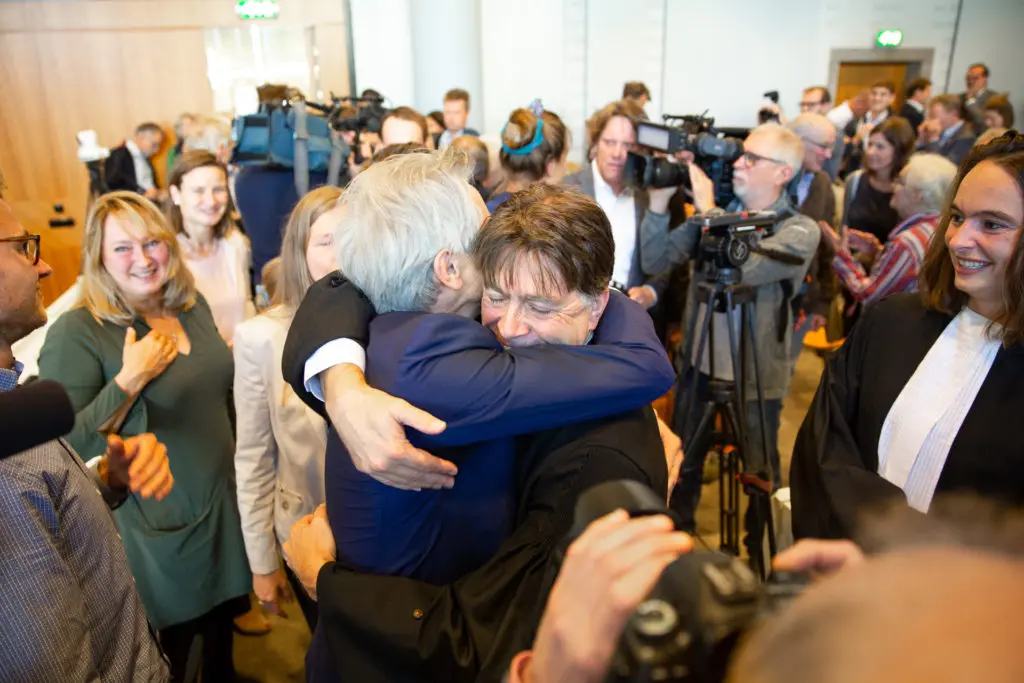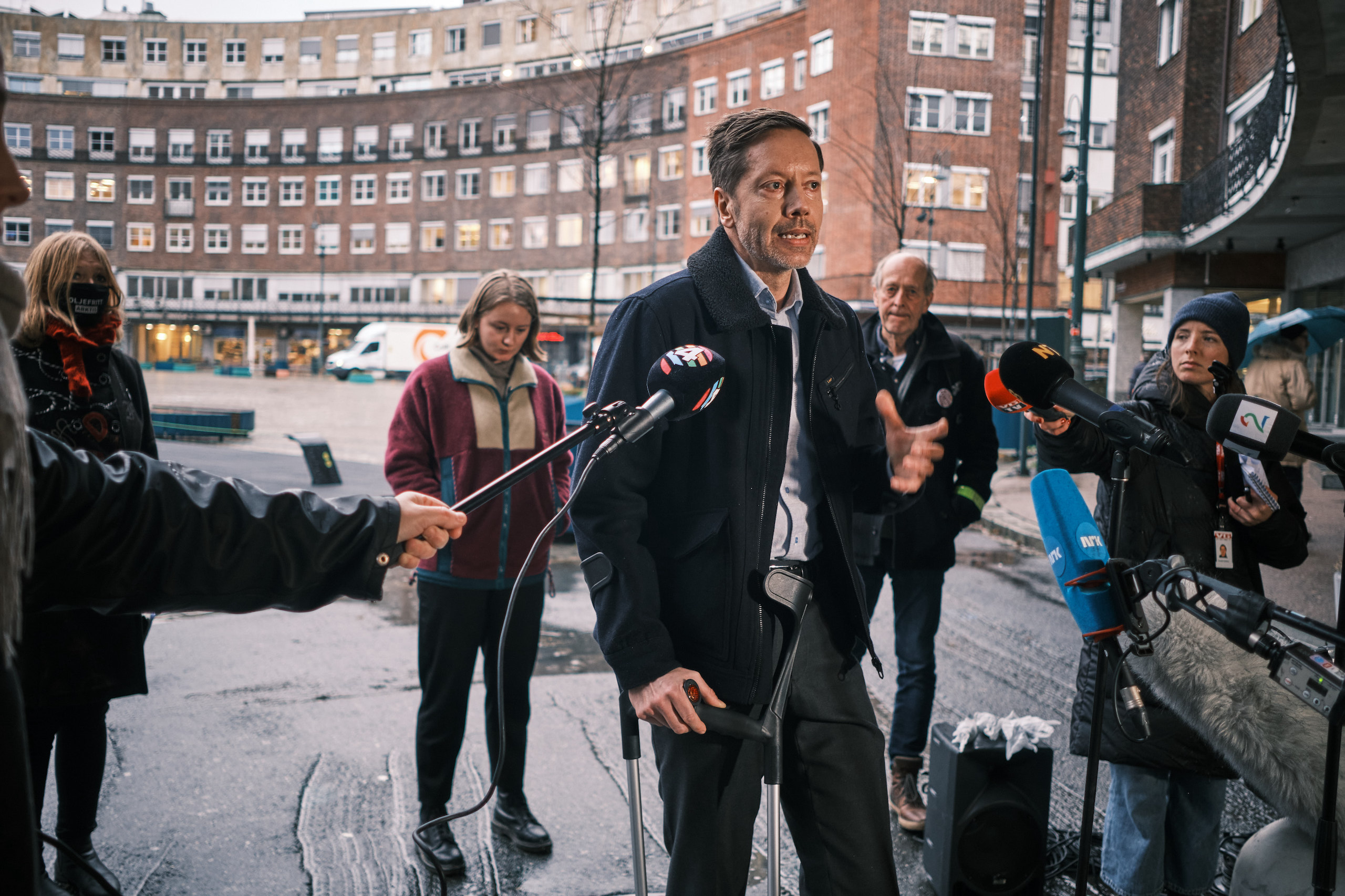In July, the UN General Assembly passed a historic resolution, 161 for and 8 abstaining, declaring the right to a healthy, clean and sustainable environment to be a universal human right. António Guterres, UN secretary-general, commented that the decision will “help States accelerate the implementation of their environmental and human rights obligations and commitments.”
The origins of the declaration can be traced back 50 years, to the 1972 UN Conference on the Human Environment, the first international conference to focus on the environment. The resulting Stockholm Declaration referred to “an environment of a quality that permits a life of dignity and well-being” as a fundamental human right.
Five decades later, the UN General Assembly’s vote shows that right is now commonly recognised. It lays a foundation for the signing of more climate agreements, for more states to include environmental rights in their constitutions, and for transformative action on the climate. It may also result in more human rights arguments being made in the growing stream of climate litigation cases being heard in courts worldwide.
The ‘rights turn’
Attempts to use human rights to promote climate change polices have been ongoing for years.
In 2006, the Inuit peoples of the Arctic petitioned the Inter-American Commission on Human Rights, complaining that greenhouse gas emissions from the US were harming their environment and culture. The commission found there was not enough evidence to prove the harms, and rejected the petition.
In 2009, the Office of the UN High Commissioner for Human Rights submitted to the UN Human Rights Council a report on the relationship between the environment and human rights. It found that climate change would affect the right to life, the right to adequate food, the right to water, the right to health, the right to adequate housing, and the right to self-determination.
The preface to the Paris Agreement, concluded in 2016, included language on climate change and human rights:
“Acknowledging that climate change is a common concern of humankind, Parties should, when taking action to address climate change, respect, promote and consider their respective obligations on human rights, the right to health, the rights of indigenous peoples, local communities, migrants, children, persons with disabilities and people in vulnerable situations and the right to development, as well as gender equality, empowerment of women and intergenerational equity.”
It was against this background that a wave of climate litigation cases based on human rights issues arose. Academics have referred to this as a “rights turn”.
Rights-based litigation is not restricted to specific infringements of the rights of certain individuals or groups. It takes a more general view. There is an increasing number of attempts to protect the rights of the young or even of future generations, because, as is clear to see, it is they who will deal with the consequences of climate disaster.
The first case to take the human rights approach was Ashgar Leghari v. Federation of Pakistan in 2015. Here, a young Pakistani farmer successfully filed a petition saying the government’s failure to act on climate change infringed his fundamental right to life and dignity.
The most famous similar case was in 2019. Urgenda v. Government of the Netherlands saw environmental group the Urgenda Foundation argue successfully that the government’s weak climate policy represented a failure to fulfil its duty of care under the Dutch Civil Code, and hence a breach of the protections in the European Convention on Human Rights of the right to life and right to private and family life. Of course, not all such attempts succeed. For example, Norway’s highest court decided that the government’s issuing of oil extraction permits in the Arctic did not infringe on constitutional rights. Be that as it may, many more cases taking a human rights approach are working their way through the courts.

As international human rights laws are binding on states, it is the states that plaintiffs take aim at, complaining that governments have failed to take adequate action on climate change. Cases against businesses have taken off more slowly and generally been unsuccessful. But the science behind the causes of climate change is improving and innovative rights-based arguments are bringing breakthroughs in such cases. The most attention-grabbing is Milieudefensie [Friends of the Earth Netherlands] et al. v. Royal Dutch Shell plc. The district court of the Hague agreed that Shell’s greenhouse gas emissions were illegal and ordered the company to cut them globally by 45% by 2030, on a 2019 baseline. That has led to further consideration of how human rights law could be used to force non-state actors to take responsibility for their actions, and further attempts at doing so.
How does the rights approach work?
The declaration by the UN General Assembly does not provide rules with which to solve disputes between states, between states and citizens, or between citizens. But it can be referred to by judges when they are drafting their rulings. One feature of climate litigation is that courts make broad use of non-legally-binding documents in their interpretations and applications of the law, and it can be expected that judges will increasingly use environmental rights as a starting point in that process.
There are clear advantages to taking a human rights approach. It means judges can fill gaps where they exist, creating new rules rather than merely updating the interpretation of existing ones. Most existing legislation predates our current understanding of climate change, and so cannot usually manage the complexities found in climate governance. It can be argued that those gaps in the law need to be filled by innovative judicial findings. The courts provide opportunities for citizens to object to the decisions made by legislators and the government, to use factual evidence and legal argument to persuade the judges to make progressive and meaningful changes to climate change law and policy, while maintaining basic legal values.
Most existing legislation predates our current understanding of climate change […] those gaps in the law need to be filled by innovative judicial findings
An important difference between ordinary climate litigation and that which uses the human rights approach is that both the litigants and the judges are arguing on legal principles. Legal norms can be divided into rules – which bestow rights, duties and responsibilities – and principles – which express the values the law seeks to pursue. Those principles can be expressed in a constitution, or in written and unwritten commitments to fundamental or human rights. Principles cannot be applied as directly as rules, but judges can combine them with existing rules to create new rules. They can also use principles to determine that existing rules are inadequate, so protecting fundamental or human rights and requiring legislators or the government to make changes. Each generation of judges must reconsider and redefine how and to what extent fundamental rights – the right to life, to private life, to equality, to property – should be protected.
Rulings on principle which appeal to human rights norms can also force private companies to take responsibility for climate change. According to a survey, the world’s 100 biggest carbon emitters were responsible for 71% of all industrial greenhouse gas emissions between 1988 and 2015. But it is not illegal to emit carbon, and the law cannot make it so retrospectively. How to make those emitters responsible for their actions has always presented a legal headache. An appeal to human rights could well be the answer – restrict industrial activity to protect more fundamental and more important human rights. Judges can rely on legal principles to explain why they are creating new rules to fill gaps and use these to protect human rights from corporate emissions.
What are the limitations?
Globally, not many cases have successfully taken the human rights approach. This is because there are limitations to what the judicial authorities can do, and these cases are very reliant on the legal culture in place.
So far, the biggest obstacle to success has been strict boundaries between judicial, legislative and executive rights. Even in Europe, where the approach has seen more success, many courts are unwilling to make direct changes to the law, or even to state that there are gaps to be filled. In the US, the so-called “political question doctrine” means matters of public policy cannot be handled in court, and so the division of powers becomes an even greater obstacle. In City of Oakland v. BP P.L.C, the court found that the link between fossil fuels and climate change was proven. But, it went on:
“Questions of how to appropriately balance these worldwide negatives against the worldwide positives of the energy itself, and of how to allocate the pluses and minuses among the nations of the world, demand the expertise of our environmental agencies, our diplomats, our Executive, and at least the Senate.”
The judiciary’s hesitancy in tackling climate change is the main obstacle to using litigation to further climate policy.
Another issue is that the judiciary is unable to mobilise the bureaucracy, police or even the army to implement better climate measures. Even if a case is won and the court rules the government should do more on climate change, the government may display a lack of political will and actual action. It may even move in the opposite direction. That means progress in climate litigation does not necessarily mean real progress on the ground.
Moreover, using the human rights approach to achieve social and political change will require broad agreement on the importance of those rights within society. Jurisdictions where such cases have been successful are often those where the approach is aligned with an existing discourse on human rights. That is, geographically, a limited area – in effect a few countries in Western Europe and South America. After all, not all legal cultures regard rights as a “trump card”.
China abstained, why?
As explained above, the new declaration by the UN General Assembly is a consequence of half a century of development in international law and diplomacy since 1972. The Stockholm conference was highly symbolic for China, as the first UN conference it sent a delegation to after retaking its UN seat in 1971. Tang Ke, the head of the delegation, said at the time that industrial capitalism was the cause of environmental damage. Since then, China has grown to become an important economic power, going from being a proponent of industrialisation and economic growth to vying for leadership of international environmental cooperation.
A look at China’s constitution shows a state-led approach. It includes no recognition of environmental rights
However, China still opted to abstain from the UN vote, due to its view on the human rights approach. The advantage of the approach is that it provides citizens with leverage to force government’s hand, and puts principles in place which judges can use to create new rules. But a look at China’s constitution shows a state-led approach – it states environmental governance is the duty of the state and includes no recognition of environmental rights. Moreover, while China’s judicial culture does encourage judges to implement policy guidance, it does not promote innovation. Internationally, it is unclear how environmental rights relate to other human rights. And in China, environmental rights are not yet recognised in domestic law. It is therefore no surprise that China chose to abstain.
On climate change, China has opted for a developmentalist approach, where climate governance is generally the responsibility of government bodies in charge of economic and industrial development. Climate policy is aimed at industrial transitions and should not hamper economic growth. This has led to China developing a “rule by plans” style: there are many policies and plans on the climate but next to no legally binding rules. Also, the administrative litigation law does not allow citizens to bring cases against government bodies due to infringement of rights.
This model has of course had a huge impact on emissions, indicating that the rights-based approach is not essential for climate policy to be effective. But it does lack transparency, accountability and public participation. Even if the rights approach comes to dominate climate litigation globally, China’s legal traditions and circumstances mean it is unlikely to follow suit.









